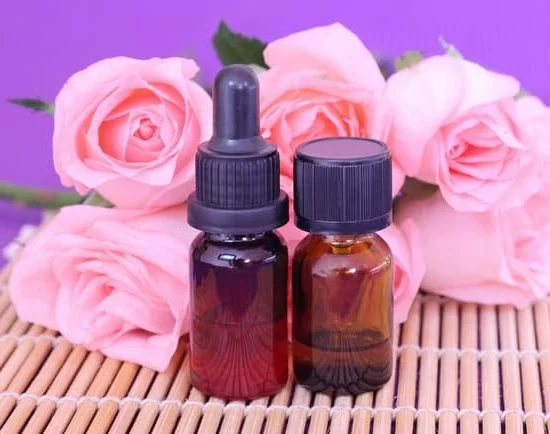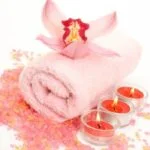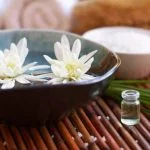Aromatherapy has been used for centuries as a holistic healing treatment, utilizing aromatic essential oils to promote physical and emotional well-being. In this article, we will delve into the fascinating world of aromatherapy, exploring its origins, applications, and benefits. This section will provide an overview of the concept of aromatherapy and its numerous advantages for overall health and wellness.
Aromatherapy is generally administered through different methods, each offering unique therapeutic effects. From inhalation to topical application and even oral administration, there are various ways to harness the power of essential oils for their healing properties. Understanding the versatility of aromatherapy delivery is crucial in maximizing its benefits for individuals seeking alternative or complementary remedies for common ailments.
Throughout history, aromatherapy has played a significant role in traditional medicine practices across cultures around the world. By tracing its evolution through time, we can gain a deeper appreciation for the art and science of aromatherapy. This section will provide insight into the historical significance of aromatherapy, shedding light on its enduring relevance in modern-day wellness practices.
A Brief History of Aromatherapy
Aromatherapy has a rich and diverse history that spans across different cultures and time periods. The use of aromatic plants and essential oils for their therapeutic properties dates back thousands of years, with evidence of its practice found in ancient civilizations such as Egypt, China, India, and Greece.
The term “aromatherapy” itself was coined by René-Maurice Gattefossé, a French chemist, in the 1920s, but the principles and benefits of using natural aromas for healing have been known and utilized for centuries.
The ancient Egyptians were known to have used aromatic plants and resins in religious rituals, cosmetics, and embalming practices. In India, Ayurvedic medicine incorporates the use of essential oils obtained from plants like eucalyptus, sandalwood, and vetiver for their medicinal properties. Meanwhile, Chinese traditional medicine also makes use of aromatic substances for both physical and psychological well-being.
The modern practice of aromatherapy has evolved to include scientific research on the therapeutic effects of essential oils on the body and mind. It has become an integral part of holistic health approaches and is widely used in alternative medicine.
Through ongoing exploration of historical texts and archaeological findings, researchers continue to uncover the depth and breadth of aromatherapy’s origins. As a result, aromatherapy has become a popular alternative or complementary therapy with various methods of administration that make it accessible to people from all walks of life.
| Historical Culture | Aromatic Practice |
|---|---|
| Egypt | Used aromatic plants in religious rituals, cosmetics, embalming practices |
| India | Incorporates use of essential oils in Ayurvedic medicine for medicinal properties |
| China | Makes use of aromatic substances in traditional medicine for physical and psychological well-being |
Essential Oils and Their Applications
Aromatherapy utilizes a wide range of essential oils, each with its unique properties and potential benefits. These oils are extracted from various plant parts such as flowers, leaves, bark, and roots, through processes like distillation or cold-pressing. Here are some common types of essential oils and their applications:
- Lavender: Known for its calming and relaxing properties, lavender essential oil is often used to promote better sleep and reduce anxiety.
- Peppermint: With its invigorating scent, peppermint essential oil is popular for alleviating symptoms of nausea, headaches, and congestion.
- Tea Tree: This versatile oil is prized for its antiseptic and anti-inflammatory qualities, making it a common choice for treating skin conditions like acne and eczema.
Understanding the specific uses of these essential oils is crucial in maximizing their potential benefits in aromatherapy.
Inhalation Methods
Inhalation is one of the most popular ways to administer aromatherapy due to its direct effect on the respiratory system. There are several methods for inhaling essential oils:
- Diffusers: These devices disperse essential oils into the air as fine mist or vapor, allowing them to be easily inhaled.
- Steam Inhalation: A few drops of essential oil can be added to hot water to create steam for inhalation purposes.
- Direct Inhalation: By inhaling the scent directly from a bottle or applying a drop of oil on a cloth or tissue, individuals can experience immediate effects of aromatherapy.
Incorporating these inhalation methods into daily routines or spa treatments can offer an effective way to experience the therapeutic benefits of aromatherapy. Understanding how each method works allows individuals to choose the best option for their specific needs.
Inhalation Methods
When it comes to aromatherapy, one of the most common and effective ways to administer essential oils is through inhalation. This method allows the aromatic compounds in the oils to enter the body and interact with the brain and nervous system, providing therapeutic benefits. But how is aromatherapy generally administered through inhalation?
One popular method is using diffusers, which disperse essential oil molecules into the air, allowing them to be inhaled. Diffusers come in various types, including ultrasonic diffusers, nebulizing diffusers, and heat diffusers. Each type has its own unique way of dispersing the essential oils and can cater to different preferences and needs.
Another way to administer aromatherapy through inhalation is through steam inhalation. This method involves adding a few drops of essential oil to a bowl of hot water, then leaning over the bowl with a towel over your head to trap the steam. The steam carries the essential oil molecules, which can then be inhaled for their therapeutic effects.
Direct inhalation is another common method where a person inhales essential oils directly from the bottle or from a cotton ball that has been infused with essential oils. This method is simple yet effective, making it convenient for quick relief or relaxation on-the-go.
As shown in the table below, each inhalation method for aromatherapy offers unique advantages and can be easily incorporated into daily routines or professional treatments.
| Inhalation Method | Advantages |
|---|---|
| Diffusers | Can cover large areas; Can run continuously for extended periods; Some offer customizable settings |
| Steam Inhalation | Clears respiratory passages; Relieves congestion; Promotes relaxation |
| Direct Inhalation | Quick and convenient; Suitable for targeted relief; Portable and easy to use |
Topical Application
Aromatherapy can be administered topically, allowing for the absorption of essential oils through the skin. This method is popular for its direct application and potential therapeutic benefits. There are several ways to apply essential oils to the skin, and each method offers unique advantages in terms of convenience and effectiveness.
Here are some common methods of topical application in aromatherapy:
- Massage: One of the most popular ways to administer essential oils is through massage. In this method, diluted essential oils are combined with carrier oils and applied to the skin through gentle massaging techniques. This allows for the absorption of the oils while providing a relaxing and soothing experience.
- Baths: Adding essential oils to bathwater is another effective way to administer aromatherapy topically. By dispersing a few drops of essential oil into warm bathwater, the skin can absorb the oil while inhaling its scent. This method provides overall relaxation and stress relief.
- Compresses: Using a hot or cold compress infused with diluted essential oils can also be an effective way to apply aromatherapy topically. The compress is soaked in a water and essential oil solution before being applied to specific areas of the body, offering targeted relief for muscle tension or other ailments.
Overall, topical application allows for direct absorption of essential oils into the bloodstream through the skin, providing targeted relief for various physical and emotional issues.
When applying essential oils topically, it is important to dilute them properly with carrier oils to avoid skin irritation or sensitization. Additionally, conducting a patch test before widespread use is recommended to ensure compatibility with individual skin types. Following these safety precautions will help optimize the benefits of using aromatherapy in topical applications.
Oral Administration
When it comes to aromatherapy, the administration of essential oils through oral consumption is a lesser-known method but has gained popularity in recent years. This approach involves incorporating essential oils into food recipes, beverages, or nutritional supplements to experience their therapeutic benefits internally.
Uses in Culinary Creations
One way in which essential oils are orally administered is by adding them to culinary creations. Certain essential oils like lemon, peppermint, and basil can be used to flavor dishes and beverages. However, it’s important to use them sparingly as they are highly concentrated and potent. For example, a single drop of peppermint oil can provide a burst of flavor to a batch of brownies or a pitcher of lemonade.
Integrating Into Supplements
Another method for oral administration is through the integration of essential oils into nutritional supplements. This allows for convenient and controlled consumption of these oils for various health benefits. For instance, capsules containing a combination of essential oils like lavender, chamomile, and bergamot may be used as natural alternatives for promoting relaxation and reducing feelings of stress.
Safety Considerations
It’s crucial to exercise caution when using essential oils orally due to their potency. Not all essential oils are safe for internal use, so it’s important to consult with a certified aromatherapist or healthcare professional before incorporating them into your diet or taking them as dietary supplements. Additionally, it’s recommended to choose high-quality, pure essential oils that are specifically labeled for internal use to ensure safety and effectiveness.
Aromatherapy in Spa Treatments
Massages
One of the most common ways to administer aromatherapy in spa settings is through massages. During a massage, essential oils are often diluted with carrier oils and applied to the skin through gentle rubbing and kneading motions. This allows the therapeutic properties of the essential oils to be absorbed through the skin and inhaled through the nose, providing a holistic approach to relaxation and healing.
Facials
Incorporating aromatherapy into facials can enhance the skincare experience by addressing specific skin concerns while also promoting relaxation and reducing stress. Essential oils can be added to facial masks, serums, moisturizers, and steam treatments to provide a sensory indulgence for clients while improving skin health.
Body Treatments
Aromatherapy is also integrated into various body treatments offered at spas, such as body scrubs, wraps, and baths. Essential oils are often used to create personalized blends that cater to individual needs and preferences. These treatments not only nourish the skin but also uplift mood and alleviate tension through aromatic stimulation.
Overall, aromatherapy in spa treatments offers a multi-sensory journey that combines touch, scent, and sight to promote relaxation, balance emotions, alleviate stress, improve circulation, and enhance overall well-being. The versatility of essential oil blends allows for a customized experience that caters to each client’s unique needs and preferences. With its wide range of benefits for both mind and body, it’s no wonder why aromatherapy has become an integral part of spa services around the world.
Safety Precautions and Best Practices
Aromatherapy is a holistic healing treatment that uses natural plant extracts to promote health and well-being. The practice of aromatherapy dates back thousands of years, with ancient civilizations using essential oils for medicinal and therapeutic purposes. In today’s modern world, aromatherapy has gained popularity for its wide range of benefits, including stress relief, mental clarity, and relaxation.
One method of administering aromatherapy is through inhalation. This can be achieved by using diffusers, which disperse essential oils into the air, allowing them to be inhaled. Steam inhalation is another popular method, where a few drops of essential oil are added to hot water and the steam is then inhaled. Additionally, direct inhalation involves placing a drop of essential oil on a tissue or cloth and inhaling the aroma.
Another common way to administer aromatherapy is through topical application. Essential oils can be applied to the skin through massage or added to baths for a luxurious and therapeutic experience. Compresses, where a cloth soaked in diluted essential oil is applied to the skin, can also provide targeted relief for muscle pain or inflammation.
Lastly, some individuals choose to incorporate aromatherapy into their daily routines through oral administration. This can include adding essential oils to food and drinks or taking them in supplement form. However, it’s important to exercise caution when taking essential oils orally as they are highly concentrated and should only be ingested under the guidance of a qualified professional.
Conclusion
In conclusion, aromatherapy offers a wide range of benefits and applications that make it a versatile practice for promoting overall well-being. From its origins in ancient civilizations to its modern-day integration into spa services and holistic healthcare, aromatherapy has evolved into a widely accepted form of complementary therapy.
The use of essential oils in inhalation methods, such as diffusers and steam inhalation, provides a convenient and effective way to experience the therapeutic properties of these natural extracts. In addition, the topical application of essential oils through massage, baths, and compresses allows for targeted relief and relaxation.
Furthermore, the incorporation of aromatherapy in spa treatments has expanded the availability and accessibility of this practice, offering individuals a chance to experience its benefits through professional services. The ability to administer aromatherapy in various settings, including home environments and wellness centers, makes it adaptable to different lifestyles. Whether used for relaxation, stress relief, or physical health support, aromatherapy can be tailored to individual needs and preferences.
Overall, understanding how aromatherapy is generally administered provides insight into the diverse ways that essential oils can be utilized for therapeutic purposes. By incorporating safety precautions and best practices into its use, individuals can experience the full potential of aromatherapy without compromising their well-being. As more people embrace holistic approaches to health and wellness, aromatherapy continues to be an accessible and beneficial option for promoting balance and vitality.
Frequently Asked Questions
How Do You Administer Aromatherapy?
Aromatherapy can be administered through several methods such as inhalation, topical application, and diffusion. Inhalation involves using essential oils in a diffuser or inhaling directly from the bottle to enjoy the therapeutic benefits.
How Is Aromatherapy Performed?
Aromatherapy is performed by using essential oils derived from plants to promote physical and psychological well-being. It can be done through massage, baths, inhalation, or applying the oils directly to the skin after dilution with a carrier oil.
What Is the Route of Administration for Aromatherapy?
The route of administration for aromatherapy primarily includes inhalation and topical application. Inhalation allows the aroma of essential oils to enter the body through the olfactory system, while topical application involves absorption through the skin when diluted oils are applied directly on specific areas of the body.

Are you looking for a natural way to improve your health and wellbeing?
If so, aromatherapy may be the answer for you.



